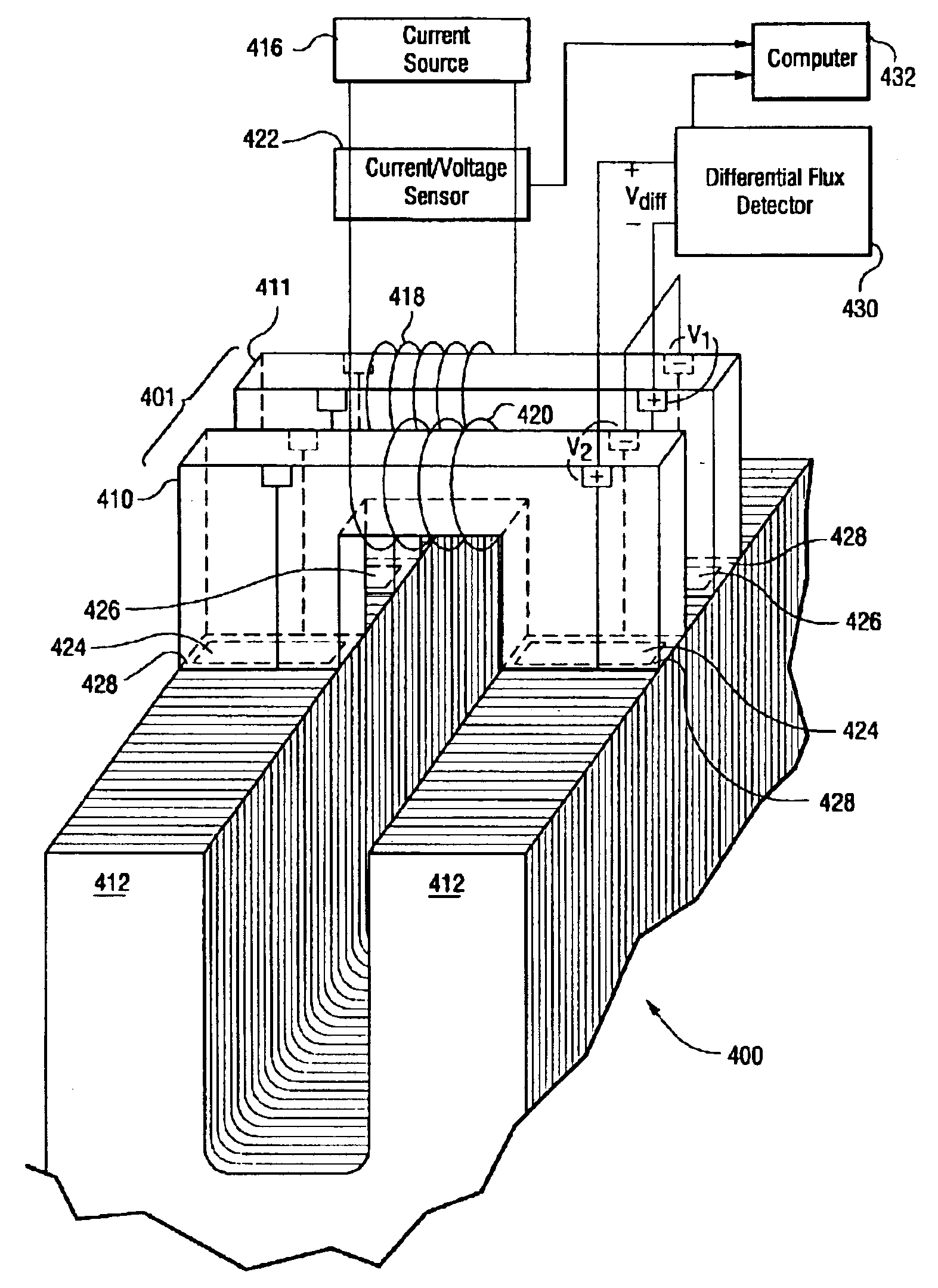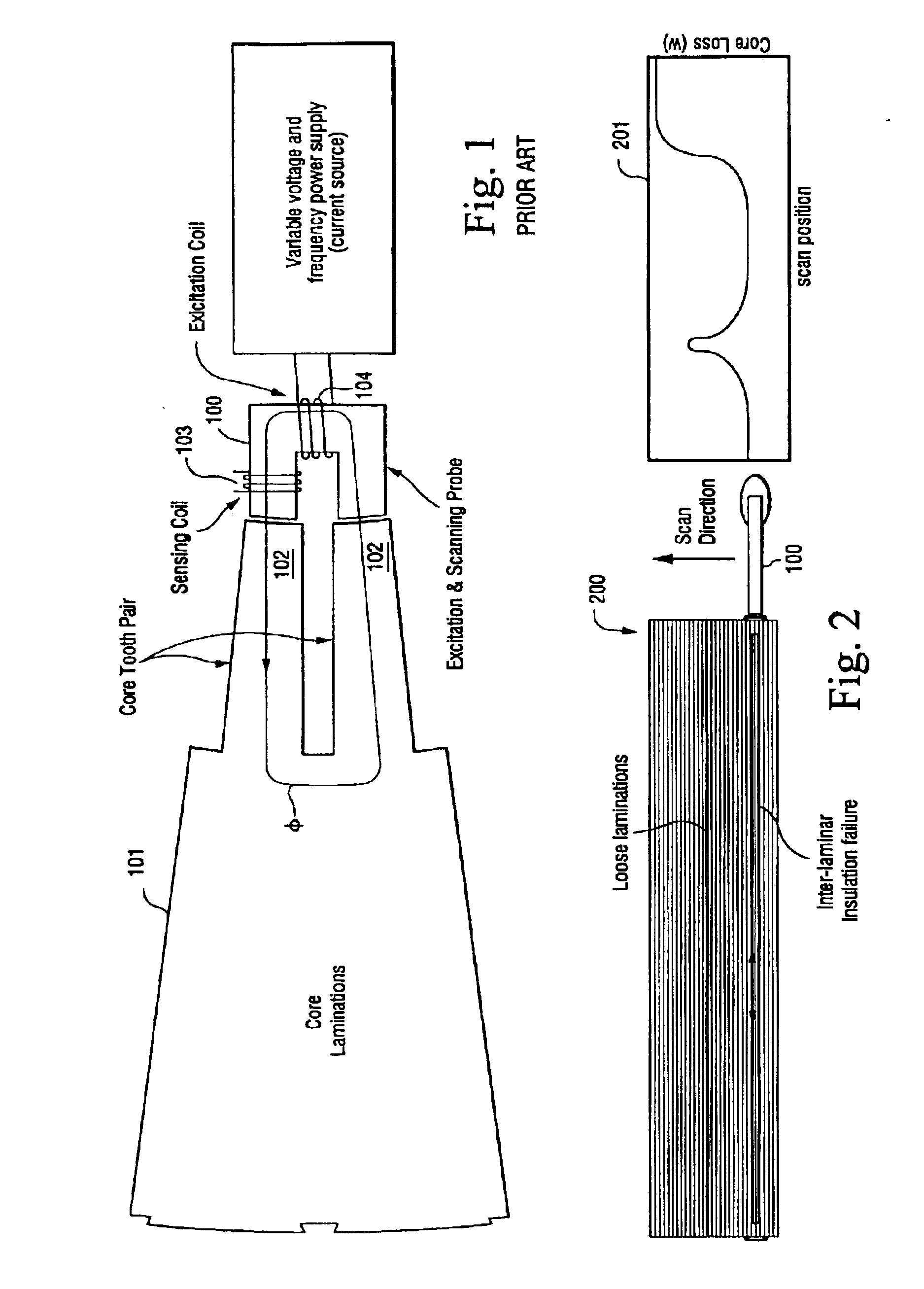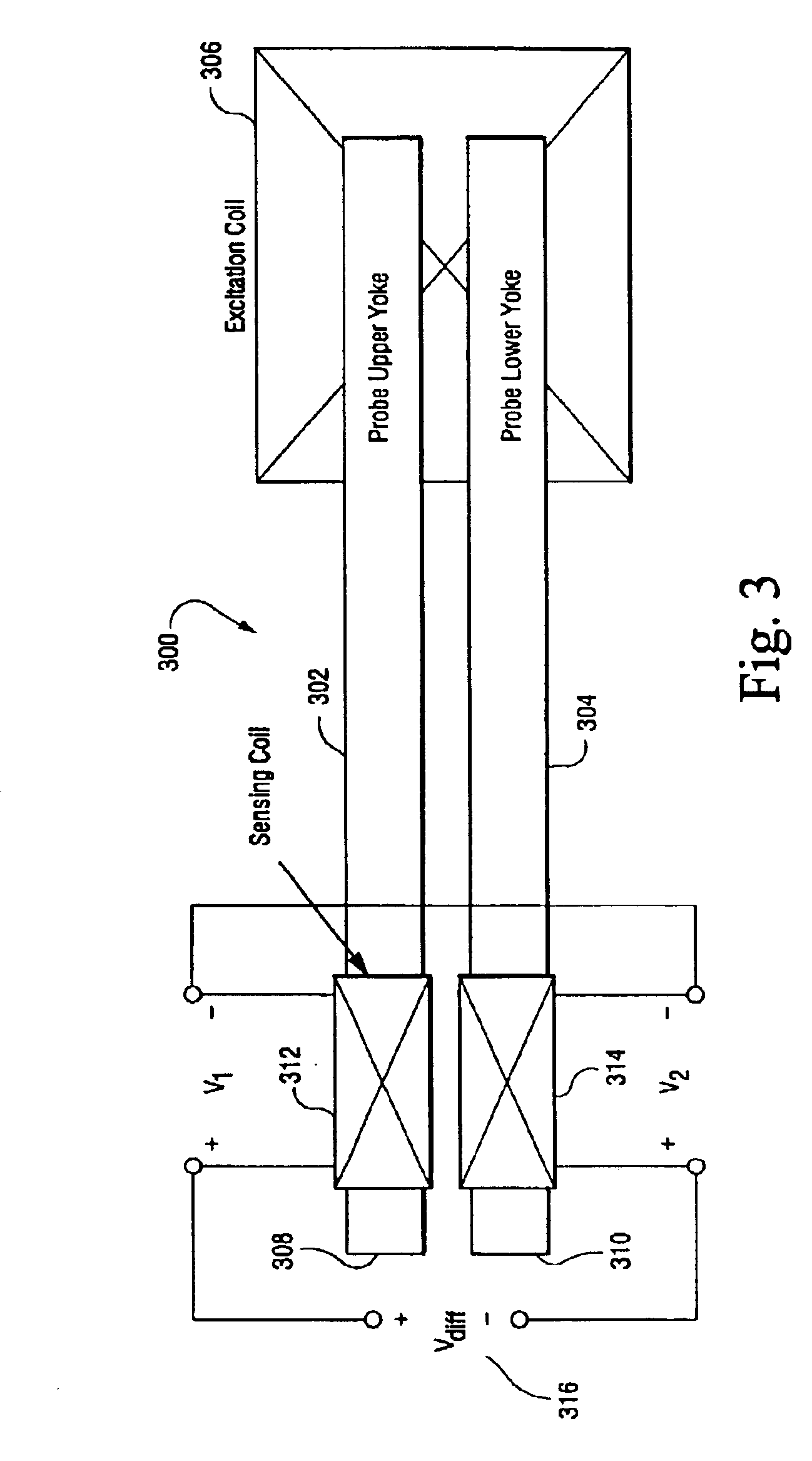Differential sensor apparatus and method for laminated core fault detection
a technology of laminated core and sensor, which is applied in the direction of magnetic property measurement, material magnetic variables, instruments, etc., can solve the problems of eddy currents flowing through shorted laminations and key bars, burning and melting of laminations, and faults in stator cores such as short circuited laminations, so as to reduce the cost of probe manufacturing, improve precision, and simplify the construction of an embodiment of the invention
- Summary
- Abstract
- Description
- Claims
- Application Information
AI Technical Summary
Benefits of technology
Problems solved by technology
Method used
Image
Examples
Embodiment Construction
FIG. 1 illustrates the basic flux-injection test concept of the present invention that is used for detecting core lamination faults. An example testing arrangement of the type conventionally used for performing a flux-injection test on the laminated core of an electrical machine is shown. The flux-injection probe consists of a single U-shaped ferromagnetic yoke 100 (which itself may be comprised of laminated sheets) wound with a magnetic flux generating “excitation coil” winding 104. During the testing procedure, the probe is preferably positioned in very close proximity to at least one stator core tooth pair and the excitation coil winding is supplied with an electrical current to inject a magnetic flux (φ) into the stator core laminations. A flux sensing coil (flux sensor) 103 is wound on an arm of the yoke to provide a signal for detecting core lamination faults by calculating a measure of the losses experienced within the core (i.e., core loss). Basically, electromagnetic probe ...
PUM
| Property | Measurement | Unit |
|---|---|---|
| thick | aaaaa | aaaaa |
| length | aaaaa | aaaaa |
| length | aaaaa | aaaaa |
Abstract
Description
Claims
Application Information
 Login to View More
Login to View More - R&D
- Intellectual Property
- Life Sciences
- Materials
- Tech Scout
- Unparalleled Data Quality
- Higher Quality Content
- 60% Fewer Hallucinations
Browse by: Latest US Patents, China's latest patents, Technical Efficacy Thesaurus, Application Domain, Technology Topic, Popular Technical Reports.
© 2025 PatSnap. All rights reserved.Legal|Privacy policy|Modern Slavery Act Transparency Statement|Sitemap|About US| Contact US: help@patsnap.com



